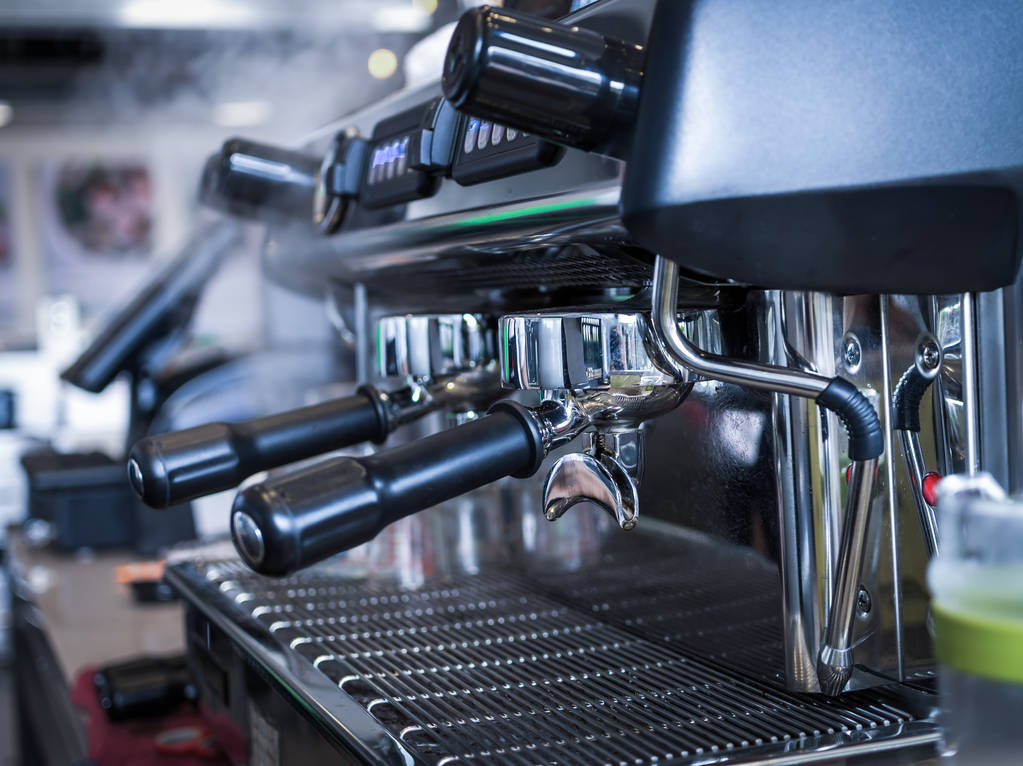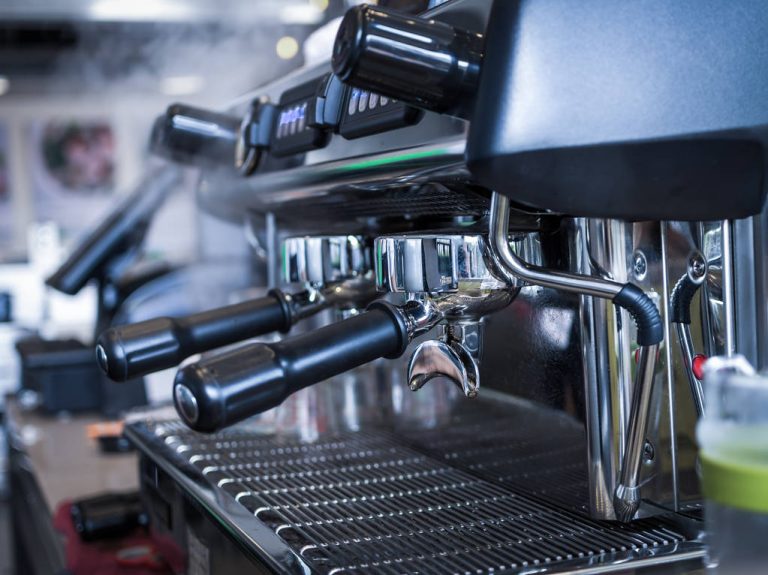Cleaning the coffee machine is one of the routine tasks for baristas in Italy. Because in the cafés, hundreds of cups of espresso go over the counter every day – and it only tastes good from clean machines. Of course, what is standard for cafés also applies at home.

How often should you descale coffee machines?
How often you should descale your coffee maker to ensure it works perfectly depends on the following factors:
Hardness of the water in your region: The harder the water, the faster limescale deposits. If you are unsure, you can ask the local water company for the value. Water hardness test strips are also commercially available.
Intensity of use of the machine: The more often you make coffee, the faster the device gets dirty.
With very hard water and medium usage, for example, the recommendation is to clean the device every three to four weeks. If the water is soft, it is sufficient to descale the machine about every six to eight weeks.
Remember: Regular cleaning extends the life of your machine! Because every time you prepare coffee in it, powder residue, fat and limescale are deposited and, in the worst case, can eventually clog the device. So it is better to clean too early than too late.
Cleaning the coffee machine with home remedies: yes or no?
The instructions for use usually state which cleaning agents you can use to descale your coffee machine. In order to clean portafilters or fully automatic coffee machines, you should avoid using home remedies or other additives. These could damage the sensitive hoses, pump or sealing elements.
On the other hand, you can easily descale your filter coffee machine with household products. Vinegar essence has proven particularly effective.
Descale the filter coffee machine with vinegar essence
Mix water and vinegar essence in a ratio of 1:4.
Pour the mixture into the water tank of the filter coffee machine.
Insert a coffee filter. It catches the dissolved lime.
Start the machine and allow the mixture to flow halfway through.
Turn off the coffee maker for about 30 minutes. During this time, the vinegar can take effect and dissolve further limescale inside the machine.
Start the machine again and let the rest of the vinegar and water mixture run through.
Remove the coffee filter. Run at least two more pitchers of water through to completely flush out the vinegar.
Cleaning the portafilter machine: how it works!
Does the espresso from your portafilter machine taste sour or is it only lukewarm? The device makes loud pumping noises? High time for a decalcification! Of course, it’s better if you don’t let it get that far in the first place.
To descale your portafilter machine, follow the manufacturer’s instructions in the instructions for use. It usually works according to this principle:
Dose the descaler according to the manufacturer’s instructions.
Mix with water in the tank of the machine.
Then remove the water alternately via the steam nozzle and brewing group. This ensures that all water circuits come into contact with the descaler and the limescale dissolves everywhere.
If the water tank is empty, rinse the machine thoroughly with fresh water.
While the descaler runs through the machine, you can devote yourself to the shower sieve and the portafilter.
Pour descaler into a bowl of warm water according to package instructions.
Leave the filter and portafilter to soak for about 30 minutes.
Rinse thoroughly with clear water.
Put back in the machine.
Clean the shower sieve and portafilter
Apart from regular descaling, the shower sieve of the portafilter machine needs your attention a little more often. You don’t necessarily need to clean it after every use, but you do after several espressos. Because coffee oils can get stuck in the sieve, which would otherwise clog the fine pores.
Cleaning the portafilter is simple: first remove the brewing sieve from the carrier and wipe it with a clean cloth. You’ve already removed the oils. Occasionally you can also clean it particularly thoroughly by letting the coffee fat remover take effect and then rinsing it off with clear water.
Simply rinse out any coffee residue left in the portafilter with lukewarm water. For a particularly simple and thorough cleaning, the trade also offers special brushes with which you can easily remove coffee residues from the portafilter and brewing group.
Tip: Before each new espresso, run a little hot water through the device without inserting the portafilter. This removes residue and the water for the espresso is kept at the optimum temperature.
Clean the milk nozzle on portafilters and fully automatic machines
Does your device have a milk nozzle or a steam lance? It is best to clean them after each use. It is easiest to remove the milk residues when they are still fresh. To loosen dried residue, let the nozzle emit steam several times, it then simply blows out the milk residue. Then wipe with a clean, slightly damp cloth – done!
Descale the coffee machine: Thanks, cleaning program!
The coffee machine is many people’s best friend in the morning. At the push of a button, it grinds beans and brews espresso with a fine crema or delicious cappuccino. Especially when it is used frequently, the hard-working coffee maker with its different areas and hoses needs regular care and cleaning.
The good news: Luckily most modern vending machines have an automatic cleaning program – and all you have to do is make sure there is enough detergent in the tank provided.
Make it a routine to run the automatic cleaning program regularly. Most machines are very well positioned here. For example, the degree of hardness of the water can often be stored in the system. In combination with the frequency of use, the device itself then determines the optimal time for cleaning and informs you by flashing or a corresponding message on the display.
Apart from that, there are components in all fully automatic coffee machines that you should regularly remove and clean yourself. Otherwise, bacteria can collect there, and in the worst case, harmful mold forms. Warm water, dish soap and a cleaning brush are usually sufficient to clean the parts. You can also simply put many components in the dishwasher.

